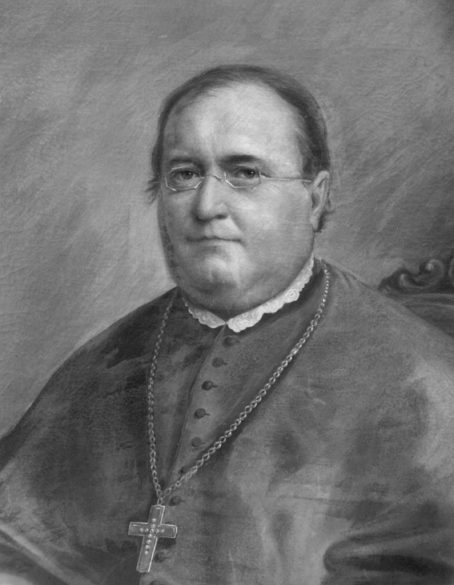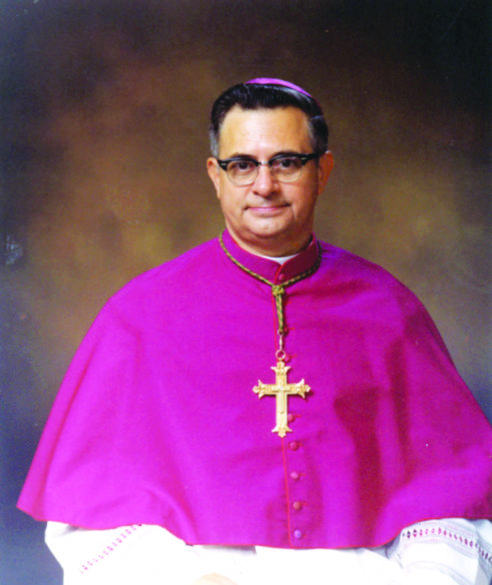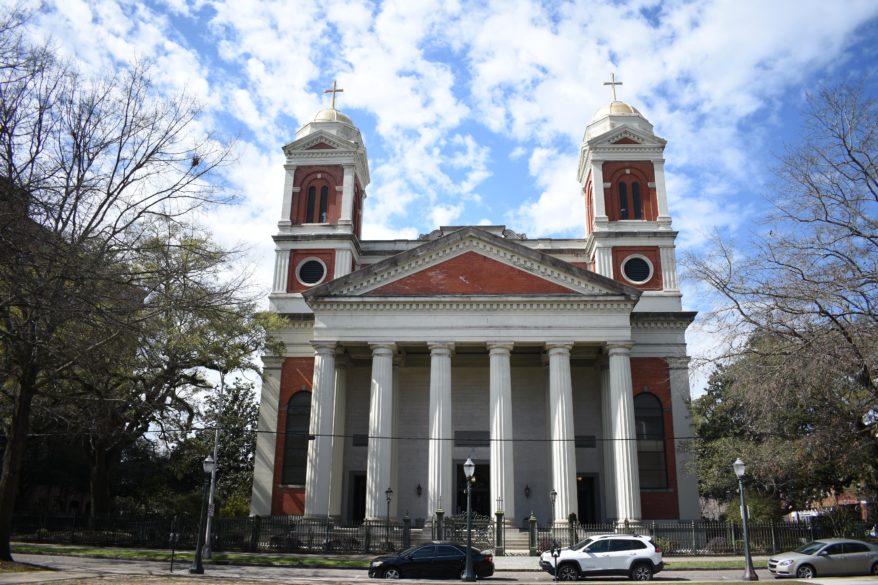From the Archives
By Mary Woodward
JACKSON – Recently, I spent a few days in the Mobile area getting some spiritual guidance and refueling after some interesting months. As I sat in the Cathedral Basilica of the Immaculate Conception on the Solemnity of the Immaculate Conception, I began to think about the historic connection our diocese has with Mobile.
To give a brief history of the region, I have taken the following from the Archdiocese of Mobile’s website history section.
The Archdiocese of Mobile was established as the Vicariate-Apostolic of Alabama and the Floridas in 1825 and became the Diocese of Mobile on May 15, 1829, with Bishop Michael Portier, D.D., as the First Bishop of Mobile. The newly created Diocese of Mobile encompassed the entire State of Alabama and the entire State of Florida.
In the 1850’s new dioceses were created in the State of Florida, nonetheless, the Diocese of Mobile still retained the panhandle of Florida until 1968 when the panhandle of Florida became part of the Diocese of St. Augustine and later the Diocese of Pensacola-Tallahassee. On Oct. 8, 1969, the Diocese of Mobile-Birmingham was divided into two separate dioceses with the newly created diocese in the state known as the Diocese of Birmingham in Alabama.
In 1980 the Diocese of Mobile was raised to the status of an archdiocese and Archbishop Oscar H. Lipscomb was appointed the First Archbishop of the newly created Archdiocese of Mobile. Today the archdiocese encompasses 22,969 square miles and includes the lower 28 counties of the State of Alabama.

The arrival of Catholicism in the region traces its origins to the early Spanish and French explorations and permanent settlements at Pensacola, Florida in 1696, and in Mobile in 1702, where a parish was erected on July 20, 1703, with Henry Rolleaux de la Vente as first pastor. At the time of the creation of the new Diocese of Mobile in 1829, most Catholics were centered in the principal towns of Mobile, Pensacola and St. Augustine.
I have such fond memories of Archbishop Lipscomb who died July 15, 2020. He was a consummate man of the church who exuded priesthood and the office of bishop and had a deep, abiding love for the history and tradition of the Catholic faith in our region.
A man of gentle voice and spirit, he was the principal consecrator of Bishop Joseph N. Latino on March 7, 2003. After the ceremony, we were headed back to the bishops’ vesting area, where he asked me to summon the miter and crozier bearers who had served him that day. When brothers Garrett and Gordon McMullin arrived, the Archbishop presented each of them with two gold Sacagawea dollars stating it was an ancient tradition in the church for the bishop to present two gold coins to them because they were considered part of the bishop’s household.
That was such a special moment to witness, and it testified to the Archbishop’s love for history and the church’s rich traditions.
Oftentimes as Mississippi Catholics, we connect ourselves to New Orleans because we share the River with Louisiana. Our diocese originally was cut from the Archdiocese of Baltimore, which is the Mother See of the United States. In 1850, New Orleans was elevated to an archdiocese and became our longtime province and metropolitan see until 1980, when Mobile was elevated to an archdiocese. We then were reunited with our sister territory of Alabama into the Mobile province as mentioned in the last article.
So, in reflecting on our history as a combined U.S. territory with Alabama in the early days of America, we have a lot of extraordinary connections to Mobile not only ecclesially, but also through the air we breathe, the soil upon which we trod and the beaches we enjoy year-round. We are sisters and brothers in one of the most unique territories in the country – Spanish West Florida.

In another profound way we are linked to Mobile through the office of bishop. Both Bishop Richard O. Gerow (1924-1966) and Bishop William R. Houck (1984-2003) were Mobile natives and Bishop Joseph L. Howze (auxiliary of our diocese from 1972-1977) was from Daphne.
Bishop Houck had a unique connection to Archbishop Lipscomb in that the Archbishop’s uncle, Msgr. Hugh Lipscomb, was Bishop Houck’s first pastor to serve under as a newly ordained priest in 1951. Bishop Houck often remarked that the Monsignor was quite the mentor.
Therefore, as I sat in the Cathedral in Mobile, I pondered on the rich tradition of Catholicism in the region and offered a prayer for Archbishop Lipscomb, who is buried in the crypt below the altar there, and for Bishops Gerow and Houck – sons of Mobile. Then I prayed for the laity, religious and clergy of our diocese and the archdiocese along with our current bishops – Joseph Kopacz and Thomas Rodi, who carry on the ministry of those 19th-century bishops of the region – John Joseph Chanche and Michael Poitier.
May God continue to bless our region with strong faith and a deep connection to our mission to serve the Lord in this distinctive corner of God’s kingdom.
I pray you all have a blessed Christmas and a joyous New Year. See you from the archives in 2022.
(Mary Woodward is Chancellor and Archivist for the Diocese of Jackson)

